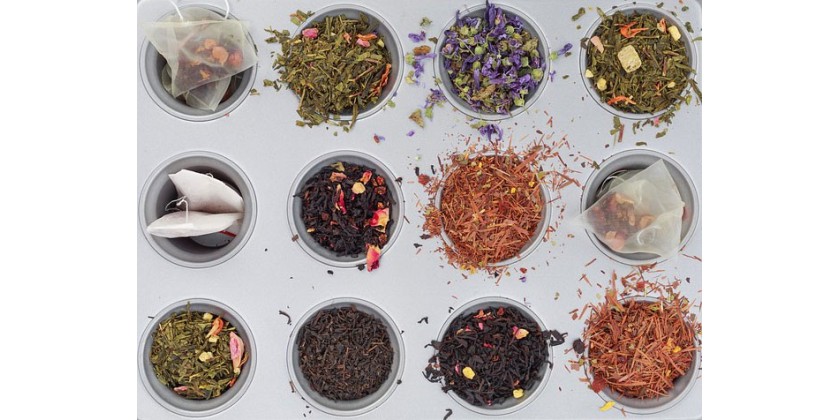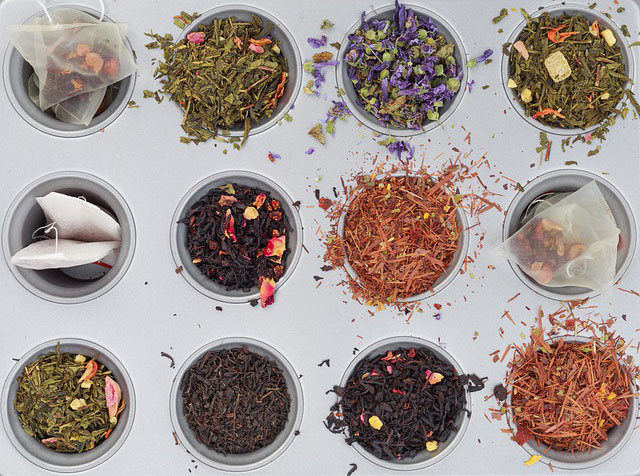
Think you have tried every single interesting blend in the world and there no more teas to try?*
Or you want to release your creativity and create fun teas that only you can think of?
Maybe you are worried if there are any hidden ingredients in your tea and want to make a 100% organic blend.
Whatever your reason is, home DIY blending is – well – extremely fun.
And yes, we encourage you to try it yourself. Here’s how to start.
What is tea blending?
Tea terminology can be very confusing. There’s blending, there’s scenting, there’s flavoring… And there’s single origin. (If you want to know the exact difference between these terms, read this article.)
The most basic definition would be:
Blending is mixing 2 or more ingredients together to create a new tea.
However, these two ingredients can be very similar. Any tea that contains more than just one type of tea from the same harvest, same quality, and processed in the same way is – a blend. While this type of blending may not be so super fun to do at home (unless you are a tea specialist or want to make your own English Breakfast tea!), you are probably more interested in making unique flavorful blends.
Top 5 Types of Tea for Blending
There are hundreds of fruits, flowers, flavors or herbs you can add to many “plain” types of tea and create your own personal tea blend. Although you can use any type of tea you want, some of them are easier to use and will offer you a wider range of potential blends.
Here are some of the best types of tea for home blending.

1. Assam black tea
Assam is one of the world’s most famous teas – it’s strong, it’s malty, it’s rich, and – it’s perfect for blending. If you never blended any tea before, Assam tea could become your best friend. It’s goes well with chocolaty flavors, minty notes, flowers or other black teas to mellow it out.
What to add? Chocolate drops, dried mint, (hint hint – After Eight black tea does sound delicious, doesn’t it?), lavender, rose petals, cardamom, cinnamon
2. Gunpowder green tea
Gunpowder is strong, rich, and not everyone’s cup of (green) tea. But it’s amazing for DIY blending. Choose a higher quality Gunpowder tea to reduce the bitterness and allow other flavors to shine.
What to add? Dried mint, rose, candied citrus peel, rose, dried mango, hibiscus or – food grade bergamot essential oil
3. Red rooibos herbal tea
You either like it or hate it – pure rooibos may not be everyone’s favorite tea, but rest assured, there is a perfect rooibos blend for everyone. This tea is so versatile you can use it for making many different drinks (hot or cold), or you can blend it with almost any ingredient you can think of.
What to add? Chocolate drops, vanilla flavor, candied citrus peel, dried flowers, mint
4. White Peony white tea
White tea may have the reputation of the world’s gentlest tea – but not all white teas are alike. We certainly wouldn’t recommend adding anything to the highest quality Silver Needle except the highest quality spring water. However, Pai Mu Tan is stronger, more blendable and, for sure, fun to have around.
What to add? Darjeeling black tea, rose petals, candied mango, hibiscus
5. Big Red Robe
Red Robe is one of the most famous Chinese teas that will always taste delicious on its own. While drinking it pure is definitely recommended, this tea has such an interesting flavor profile that it can easily become one of your favorite home tea blending ingredients. Try using it for making afternoon tea treats.
What to add? Dried plums, cinnamon, sultanas, amaretto cherries, walnuts
Can you mix different types of tea together?
Yes, you can. The only thing you need to pay attention to is that all real teas have a similar flavor profile, and that ingredients you add match together. To make the best blend, always make a cup of base tea first. Taste it, enjoy it, get to know it – then choose the perfect ingredients to match its flavor. You can try steeping the ingredients separately too, to see how much flavor they will release. Sometimes, some of them may only look nice, but may not contribute to the flavor – these are called inclusions.
Extra tip: Make a small batch of tea first and store it properly. Different ingredients have a different shelf life.
Tried tea blending at home yet? We’d love to hear what your favorite blends are.
* Does this mean that you've already tasted Marmalade Pu’erh and Lemon Meringue Pie?



Leave a Reply Cancel Reply